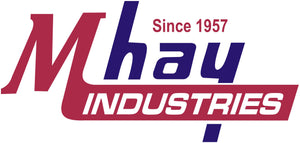Veterinary Tools: A Comprehensive Buying Guide
Recent Post
Archive
- December 2023
-
- The Veterinary Tools Revolution: A Journey Towards Advanced Animal Care
- Mhay Industries: A Testament to Quality and Innovation in Veterinary Tools
- A Look Behind the Scenes: How Mhay Industries' Tools are Made
- Expanding Your Veterinary Practice: Essential Tools in Your Arsenal
- The Role of Proper Equipment in Successful Small Animal Surgeries
- Global Recognition: Mhay Industries' Veterinary Tools Trusted Worldwide
- Veterinary Tools: A Comprehensive Buying Guide
- Animal Health and Welfare: Essential Tools in Handling Small Animals
- The Impact of Quality Tools on Your Veterinary Practice
- The Role of Veterinary Tools in Animal Rescue Centers

Veterinary Tools: A Comprehensive Buying Guide
Dec 28, 2023
Introduction:
Investing in the right veterinary tools is a critical aspect of providing optimal care for your animal patients. Whether you're setting up a new practice, upgrading your existing tools, or replenishing your inventory, navigating the world of veterinary tools can be a complex task. In this comprehensive buying guide, we'll walk you through the key factors to consider when selecting veterinary tools, ensuring that your choices align with the needs of your practice and the well-being of your patients.
1. Assess Your Practice's Needs:
Before diving into the world of veterinary tools, take the time to assess the specific needs of your practice. Consider the types of procedures you commonly perform, the species you primarily treat, and any specialized services you offer. This initial assessment will guide you in selecting tools that align with the unique requirements of your practice.
2. Quality and Durability:
The quality of veterinary tools is paramount. Opt for tools crafted from high-quality materials, such as surgical-grade stainless steel. Durable tools not only withstand the rigors of daily use but also contribute to the longevity of your investment. Look for reputable manufacturers with a track record of producing reliable and durable instruments.
3. Precision and Accuracy:
Precision is crucial in veterinary care. Ensure that the tools you choose offer the level of precision required for accurate diagnoses and effective treatments. Tools with ergonomic designs and features that enhance accuracy contribute to the overall efficiency of your practice and the well-being of your patients.
4. Versatility and Specialization:
Consider the versatility of the tools in your selection. While some tools are designed for general use, others cater to specific procedures or species. Having a balance of versatile and specialized tools ensures that you are equipped to handle a wide range of cases, from routine examinations to complex surgeries.
5. Ergonomics and Practitioner Comfort:
Practitioner comfort is a critical factor in the overall efficiency of your practice. Tools with ergonomic designs, comfortable grips, and user-friendly features reduce the risk of practitioner fatigue during prolonged procedures. Prioritize tools that contribute to the well-being of your veterinary team, enhancing both their performance and job satisfaction.
6. Ease of Maintenance:
Efficient practice management includes the maintenance of your tools. Choose instruments that are easy to clean, sterilize, and maintain. Consider the manufacturer's guidelines for maintenance and ensure that the tools you select align with your practice's protocols for infection control and hygiene.
7. Warranty and Customer Support:
Look for tools backed by a solid warranty and reputable customer support. A reliable warranty provides peace of mind, and responsive customer support ensures that any issues or questions are promptly addressed. Consider the manufacturer's reputation for standing behind their products and providing excellent service.
8. Budget Considerations:
While quality is paramount, it's essential to consider your budget constraints. Create a budget that allows for the purchase of high-quality tools without compromising on essential features. Prioritize key instruments based on their importance to your practice, and consider phased purchases if necessary.
Conclusion:
Choosing veterinary tools is a significant decision that impacts the quality of care you provide to your animal patients. By following this comprehensive buying guide, you can make informed decisions that align with the specific needs of your practice. Explore our collection of high-quality veterinary tools, each carefully crafted to meet the demanding standards of modern veterinary care. Invest wisely, and elevate your practice to new heights of excellence.
- . High-Standard Veterinary Tools, Advanced Veterinary Tools, Animal Treatment Tools, Efficient Veterinary Tools, Expert Veterinary Tools, Farrier Tools, Global Veterinary Tools Provider, Long-Lasting Veterinary Tools, Meticulous Veterinary Tools, Mhay Industries, Pioneering Veterinary Tools, Precision Veterinary Tools, Reliable Veterinary Tools, Superior Material Veterinary Tools, Top-quality Veterinary Tools, Trusted Veterinary Tools Manufacturer, Veterinarian Recommended Tools, Veterinary Tools for Equine Dental Care, Veterinary Tools for Professionals, Veterinary Tools Manufacturer, World-Class Veterinary Tools
← Older Post Newer Post →
Manufacturers & Exporter of Equine Dental Tools , Farrier Tools & Small Animal Dentistry.
- Circular Road , Sialkot - Pakistan
- info@mhayindustries.com
Information
My Account
Newsletters
Copyright © Mhay Industries 2024 All Rights Reserved.





